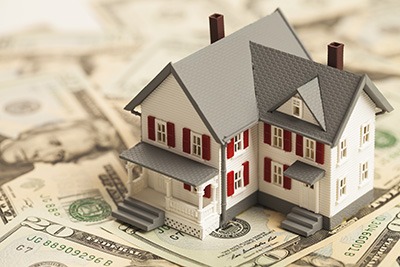702-660-7000
702-660-7000

Recently, Dave Ramsey was busy bashing life insurance again. It must be pretty dull having to pick on the same subject all the time, without having any facts to back up your opinion. Anyway, Dave mentioned that life insurance was too costly to maintain. Ramsey also says there are better places to invest your money, like paying off your home mortgage.
Instead of taking Dave’s word for it, let’s examine the facts. When you pay off you home, like Ramsey encourages his listeners to do, what kind of return do your really earn? That’s a fair question that we can find the answer to very easily.
So, to start off with, if you are going to earn a rate of return on the purchase of your home, your home must appreciate by $120,000 during the 15-years it took you to pay it off. It if does, then you will have made a “break even investment.” Wow, that means your home value has to appreciate significantly more than what you’ve paid for it over those 15-years to actually earn a rate of return.
Now let’s consider what has to happen for that appreciation to actually happen. For this, you will need the “Housing Inflation Rate”[i] which is calculated by dividing the Consumer Price Index (CPI) in the year you pay off your home, by the CPI in the year you purchased your home. Once you have that number, you will multiply it by the original purchase price of your home. In the above example, if you purchased your home in 2000 and paid it off in 2015 you would take the CPI for 2015 which was 238.061[ii] and divide it by 169.575[iii] which was the CPI of 2000, the year you purchased your home. That will give you the number 1.4 which you then will multiple by $300,000, the purchase price of your home in 2000. This gives you the value of your home in 2000 in 2015 dollars. In this case $421,106.55. Here’s the formula
You can now assess that $421,160.55 is greater than $420,030 and know for sure that you have earned a rate of return on your home purchase. In this example, your actual rate of return is 0.02%. And I see that you are not jumping up and down about the wonderful rate of return you earned on the purchase of your home.
Might it be that your home is not the best investment that Dave Ramsey says it is? Or is Dave really easily impressed with low rates of return, and that’s why he keeps encouraging his listeners to pay off their mortgages fast? You decide.
But seriously, Dave is always having his listeners find out what rate of return their life insurance is providing them. Then he likes to mock the rate of return, telling them they could earn a much higher rate somewhere else. All the while he advocates everyone to pay off their house, even though the actual rate of return on paying off your house is laughable.
So, let’s compare this home investment to a well-designed cash value participating whole life insurance policy (PWLIP) purchased on a healthy 30-year old male at $1,000 a month for 15-years. What happens is, that over those 15-years the PWLIP shows an internal rate of return (IRR) of over 1.4%!
But that’s not all. The PWLIP has enough face value to pay off your home anytime during that 15-years, if something happens to you. And, by year 15 the face value will have grown to be $984,144. No other premium payments are required after year 15 as the PWLIP is paid-up. Even so, the cash value, and face value, will continue to grow. By age 67, the cash value will be $630,493 and that money can be used tax free for your retirement. The face value, which has continued growing as well, will then be over $1,102,570.
You see, unlike your home, there are no property taxes, home owner association fees or maintenance costs that you continually have to pay in order to keep your policy. So, the growth in your policy is even greater than the growth that occurs in your real estate (or really any other investment) because those taxes, fees and maintenance costs add up over the years.
In summary, when you purchased your home 15-years ago, the real cost of that home ended up being 40% more than what the listing price was by the time you paid it off.
On the other hand, the PWLIP you purchased had a rate of return that was over 70 times better than your home’s rate of return by year 15. Of course, the PWLIP also has a death benefit that would have easily paid off your home any time along the way if something terrible had happened. On top of that, the cash value in the PWLIP by retirement age was significant enough that you could increase your retirement income by $25,000 a year for the next 25 years and not run out of money.
Of course, when you do pass…let’s say at a ripe old age of 92, there would be well over $1,000,000 to leave to a good cause. Maybe your spouse, maybe your children. Maybe an endowment for a college or a charity. The possibilities are limitless.
And obviously, if you’ve only paid $180,000 ($1,000 X 180 months—15 years) but have been able to access over $625,000 and leave over $1,000,000 to your spouse, children, endowment or charity, how much did the PWLIP really cost you?
Would you like to have more options than just “paying your house off early”?
[i] http://www.in2013dollars.com/Housing/price-inflation/2000-to-2018?amount=100000
[ii] Ibid
[iii] Ibid